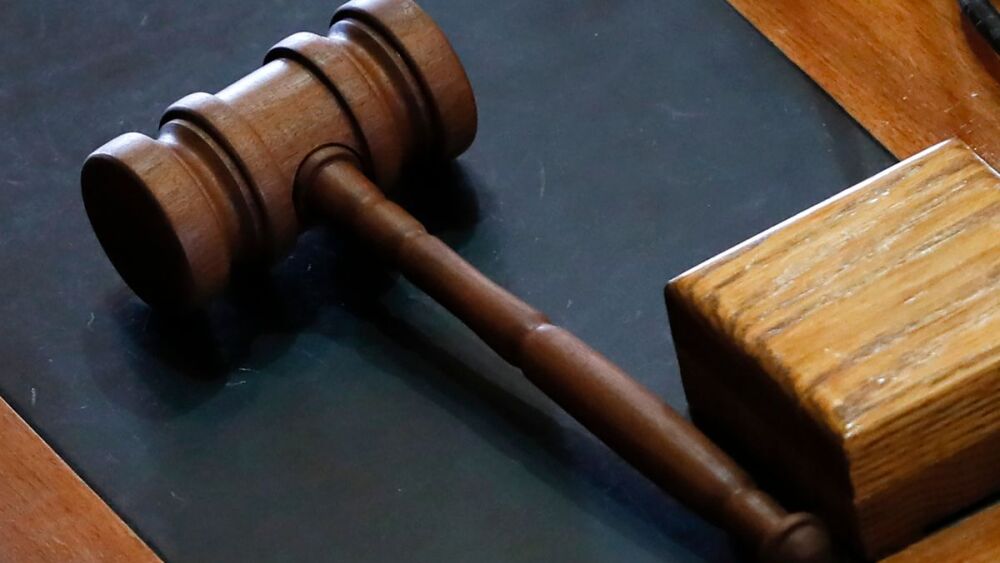On 4/9/22 at 9:15 a.m., Pierce County Washington Deputy Mark Rickerson observed a Honda Civic parked legally on a public street near the entry gate to a church parking lot.
The location of the Civic was significant to Rickerson because in an unrelated incident four or five months earlier, a person was arrested there in a stolen car. Further, during the same time frame, a person told Rickerson there were many vehicles parking in the same area that didn’t belong there.
Rickerson noticed the Civic’s driver appeared to be unconscious. He parked the police vehicle without blocking the Civic from leaving, ran a records check on the Civic’s plate and discovered a report of sale. The Civic was not reported stolen but the check did not reveal the name of the current owner. Rickerson approached the driver in full uniform and noticed a second male who appeared to be unconscious in the front passenger seat.
Rickerson knocked on the driver’s window for several seconds before Sum, the driver, woke and slightly rolled down the window. Rickerson asked Sum what they were doing there, and Sum said they were waiting for a friend. He asked Sum who owned the Civic and Sum responded that it was not his. Sum identified the owner by furnishing only a first name.
Rickerson asked both men to provide identification and Sum asked why he wanted it. Rickerson told him it was because they were sitting in an area known for stolen vehicles and Sum did not appear to know who the Civic belonged to. Sum provided a false name and date of birth. Rickerson went to his vehicle to conduct a records check. Sum immediately took off, driving partially on the sidewalk and over grass.
A police pursuit followed, involving high speeds, multiple traffic infractions and a crash at the end. Sum was arrested and a search of his person revealed the Civic’s title and registration, showing him to be the owner. A later search of the car pursuant to a warrant disclosed a pistol. Sum was charged with multiple offenses and the charging documents identified his race as “Asian/Pacific Islander.”
Lower court rulings
Prior to trial, Sum filed a motion to suppress. He alleged that he was unlawfully seized without reasonable suspicion when Rickerson requested his identification while implying that he was under investigation for car theft. The trial court ruled against him and held that no seizure took place when Rickerson asked Sum for identification. Sum was convicted on all charges after a jury trial. The Court of Appeals affirmed, ruling that merely asking for identification is not a seizure. Sum petitioned for review by the Washington Supreme Court.
The decision of the Washington Supreme Court [1]
Sum argued before the Supreme Court that he was unlawfully seized when Rickerson asked him to produce identification. He claimed that Rickerson did not have reasonable suspicion to justify a seizure and that the question of whether a seizure occurred must include a discussion of the person’s race and ethnicity.
The Court agreed, reversed the lower court decisions, and ruled that Sum was not free to refuse Rickerson’s request for identification and was seized without reasonable suspicion. [2] The Court added that pursuant to article I, section 7 of the State of Washington Constitution, state courts now, “must consider race and ethnicity of the allegedly seized person as part of the totality of the circumstances” in deciding whether a person is seized by police officers. The Court suppressed Sum’s false statement concerning his name and date of birth and remanded the case back to the trial court for further proceedings consistent with its opinion.
The court’s rationale
- The test for a “seizure” is an “objective” test: The Court stated that its decision was based on Article 1, Section 7 of the State Constitution. [3] The Court observed that the Washington State case precedent makes clear that the question of whether a person has been seized by police is answered “by objectively looking at the actions of the law enforcement officer.” The Court explained, “the seizure analysis in Washington is ‘a purely objective one,’” [4] examining the actions of the officer. The Court explained further that the “’subjective intent of police is irrelevant to the question [of] whether a seizure occurred,’” [5] Moreover, “the seizure analysis is not based on the subjective viewpoint of the allegedly seized individual.”
- “Race and ethnicity” added as new factors in the “totality of circumstances” seizure test: The Court ruled that “as a matter of independent state law … race and ethnicity are relevant to the question of whether a person was seized by law enforcement.” The Court explained that “an objective observer in Washington is aware that implicit, institutional, and unconscious biases, in addition to purposeful discrimination, have resulted in ‘many injustices against BIPOC, [6] particularly in the criminal justice system.’” [7]
The State argued that Sum was not able to provide media reports and statistics that demonstrate racial or ethnic bias on the part of Pierce County police authorities. The Court noted that “the State contends that Sum’s race is irrelevant to our seizure analysis because there is no similar evidence [of racial or ethnic bias] in the record here.” [8] The Court answered: “Statistical evidence and media reports may increase the weight that should be given to race or ethnicity …, but the lack of such evidence does not make … race or ethnicity irrelevant.” [9]
The Court also referenced the so-called “talk” as a reason to reject the need for Sum to produce empirical evidence of law enforcement racial bias. The Court explained that “[f]or generations, black and brown parents have given their children “the talk” – instructing them never to run down the street; always keep your hands where they can be seen … all out of fear of how an officer with a gun will react.”
The Court likewise rejected the State’s argument that Sum offered no proof that Deputy Rickerson held prejudicial beliefs against minorities. The Court answered: “’[M]any who consciously hold racially biased views are unlikely to admit to doing so’ and ‘implicit racial bias exists at the unconscious level, where it can influence our decisions without our awareness.’” [10]
Conclusion and author’s observations
The Washington Supreme Court unanimously ruled that a seizure of a person occurred after a law enforcement officer approached an individual in a public place and requested him to furnish identification. The Court, by limiting its analysis to an interpretation of the State Constitution alone, concluded that an unlawful seizure took place despite the total absence of any coercive and threatening conduct, or display of force by the deputy sheriff.
This decision is both concerning and troubling on several levels.
First, it fails in its legal analysis by adding a totally “subjective” racial animus element to a “legal” test that it claims is entirely “objective.” The Court specifically states that the subjective state of mind of both the officer and the subject is irrelevant. However, the Court clearly contradicts its own test doctrine by requiring future courts to add to its “objective” test, a totally subjective analysis that now must include race and ethnicity. Going forward, every police/citizen encounter will be judged in part by “implicit, institutional and unconscious biases “on the part of law enforcement in the seizure analysis.
Second, the judges have decided to impose their personal social views upon law enforcement officers and presume as a “given” that racial and ethnic bias exists in the minds of all officers as a starting point for every police/citizen encounter. They have succeeded in weaving their social beliefs into a legally binding test through a faulty legal analysis.
This decision creates a new low in American criminal law. This new approach may result in officer hesitation to enforce the law; more guns being carried by persons looking to commit crimes that threaten public safety; and many more crime victims among law-abiding citizens.
References
1. State of Washington v. Palla Sum, (No. 99730-6) (June 9, 2022).
2. See Note 3 of the Court’s opinion, “Sum challenges one of the trial court’s findings of fact. However, that finding is relevant only to whether Deputy Rickerson had reasonable suspicion when he requested Sum’s identification. Because the State correctly concedes that the deputy did not have reasonable suspicion at that time, we do not consider the challenged finding on review.”
3. State Supreme Courts frequently resort to this tactic and avoid deciding cases on the Fourth Amendment to the United States Constitution in order to insulate themselves from reversal by the U.S. Supreme Court.
4. (Quoting State v. O’Neill, 148 Wn. 2d 564, 574 (2003)).
5. (Quoting O’Neill, Id. at 575).
6. Black, Indigenous and People of Color.
7. (Quoting, Washington State Court General Rule 37(f)).
8. The Court mentioned one statistic and observed that “individuals who are Native Hawaiians and other Pacific Islanders are 3.3 times more likely than a white person to be killed by police.” This sentence appears to be Dicta in the Opinion that has no bearing on the Court’s rationale or the outcome of its decision.
9. The Court is saying not too subtly that statistical evidence of police discrimination which is often erroneously based upon disparate racial differences generated from general population statistics is simply not needed to establish racial and ethnic bias in police/citizen encounters.
10. (Quoting, State v. Berhe, 193 Wn.2d. 647, 657 (2019)).



